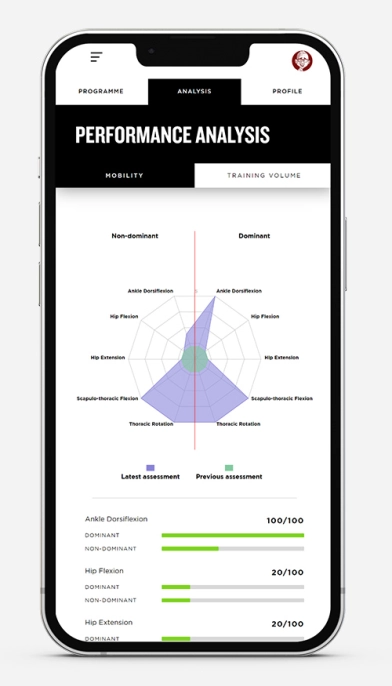Catching and blocking spam emails is one of the biggest annoyances on the internet. In this brief guide, I will give you an overview of what a Honeyt Captcha is and how you can implement one.
What is a Honeypot Captcha?
One fantastic solution to the problem of reducing spam is to implement a standard recaptcha field. This method works well, but it has downsides? You have to have a cumbersome character input field on all of your forms, or select options from a list of images which is annoying and takes time. The Honeypot method is an elegant alternative to this approach.
At its core, a honeypot CAPTCHA involves laying a digital trap for bots. You introduce a form field invisible to genuine users (thanks to CSS magic that hides the field) but is a tantalizing fill-me-up signal for spam bots trawling through web forms. The principle hinges on bots' tendency to fill out every field they encounter in a form, aiming to spread their spammy payload far and wide. When this hidden field gets filled, it flags the submission as spam because a human user wouldn't (or rather, couldn't) interact with an invisible field.
So you set the trap, lay the bait, and if the spammer takes it, you ignore the form submission.
Example Implementation (With Code)
Now, let's implementing a honeypot captcha to catch that pesky spam!
The HTML
The honeypot captcha method is fairly simple. Put a field onto your form that humans won't fill out. Most spam bots search for forms, fill out every field and submit it. If the honeypot captcha field is filled out then you know that it is a spam submission.
But, rather than defining your honeypot input field HTML like this:
<form>
<p><input type="hidden" name="honeypot" value="" /></p>
</form>Instead, use an actual text field like this:
<form>
<p class="thepot"><input type="text" name="honeypot" value="" alt="if you fill this field out then your email will not be sent"/>
</form>This approach makes the input field look much more convincing to a spambot, increasing the chance it it filled out and that they fall into our trap.
The CSS
Next we hide our honeypot in the style rules:
.thepot { display:none !importantl}The Back End Code
Given every developer uses a different back-end, here is some example of pseudocode to handle the form submission:
if(the honeypot is set){
//make the spammer think the form was submitted successfully, but do nothing!
}else{
//Process the form submission
}Here is an example in PHP:
<?php
// Check if the honeypot field is filled out
if (!empty($_POST['honeypot'])) {
// If the honeypot field is filled, do not process the form and possibly log the attempt
echo "Spam detected. The form was not submitted.";
} else {
// Process the form as normal
$name = filter_input(INPUT_POST, 'name', FILTER_SANITIZE_STRING);
$email = filter_input(INPUT_POST, 'email', FILTER_SANITIZE_EMAIL);
// Here, insert your code to handle the form data, like sending an email or saving to a database
echo "Thank you, $name. Your form has been submitted successfully.";
}
?>Pros and Cons
So what are the trade offs? Here is a list of the pros and cons of the Honey Pot Captcha:
Pros
- Simplicity: Honeypot CAPTCHA is incredibly easy to implement. A few lines of HTML, CSS, and PHP are all it takes to set up a basic honeypot.
- Non-Intrusive: Users won't even notice it's there. Unlike traditional CAPTCHAs, honeypots don't add extra steps to the form submission process, leading to a smoother user experience.
- Design-Friendly: It doesn't interfere with the website's design or layout because it's invisible to human users.
- Low Maintenance: Once set up, it requires little to no maintenance, working silently in the background.
Cons
- Not Foolproof: Sophisticated bots designed to detect and ignore honeypots can easily bypass this method.
- Accessibility Issues: Screen readers might pick up the honeypot field, potentially confusing visually impaired users. The alt attribute can help, but it's not a guaranteed fix.
- No Added Value: Unlike reCAPTCHA, which helps digitize books or improve AI systems by leveraging human inputs, honeypots don't contribute to any larger project or goal.
- False Positives: There's a small chance of rejecting legitimate users if they, for any reason, interact with the honeypot field (e.g., browser autofill features mistakenly filling the field).
In essence, while honeypot CAPTCHAs offer an elegant, user-friendly method to combat spam, they're best used as part of a layered security approach rather than a standalone solution. They're great for keeping low-effort bots at bay without annoying your users, but they're not a silver bullet against more sophisticated threats.
Available Plugins
If you're running a WordPress site and searching for an efficient, non-intrusive method to guard against spam, consider the WP Armour – Honeypot Anti Spam plugin. It's a testament to the effectiveness of simplicity in the digital age, where sophisticated challenges require smart solutions. For more information or to download the plugin, visit WP Armour on WordPress.org.
The honeypot CAPTCHA represents a clever and minimally invasive strategy for tackling the pervasive issue of spam on the internet. Its simplicity, non-intrusive nature, and ease of implementation make it an appealing option for web developers looking to safeguard their sites without compromising user experience. However, it's important to acknowledge its limitations, including vulnerability to sophisticated bots and potential accessibility challenges. As such, while honeypot CAPTCHAs can significantly reduce spam, they should ideally be employed alongside other security measures to ensure comprehensive protection.
Embracing a multifaceted approach to spam prevention will help maintain the delicate balance between security and user friendliness, ensuring a seamless online experience for all legitimate users.
Closing Words
Integrating the principles of honeypot CAPTCHAs can also play a crucial role in mitigating the impact of automated bots in chat environments, including those powered by technologies like ChatGPT. Given the increasing sophistication of bots capable of mimicking human-like interactions, the need for effective spam and bot management strategies in these platforms has never been more critical. By implementing a digital "honeypot" within the interaction flow—perhaps in the form of hidden keywords or commands that are invisible to regular users but would trigger a bot's response mechanisms—developers can identify and filter out automated participants.
This method can ensure that ChatGPT applications remain high-quality, engaging, and free from spam or malicious bot interference, thereby preserving the integrity of user interactions. Furthermore, it supports the creation of safer digital spaces where genuine conversations can flourish without the disruptive presence of unwanted bot activity.
If you're exploring ways to incorporate ChatGPT into your digital offerings or looking for advanced strategies to safeguard your chat applications against bots, Scorchsoft is here to assist. Our expertise in developing custom ChatGPT applications and implementing effective security measures like honeypot CAPTCHAs ensures that your projects not only meet but exceed user expectations. Contact Scorchsoft today to discover how we can help you leverage ChatGPT technology to its fullest potential, creating engaging, secure, and innovative digital experiences.




